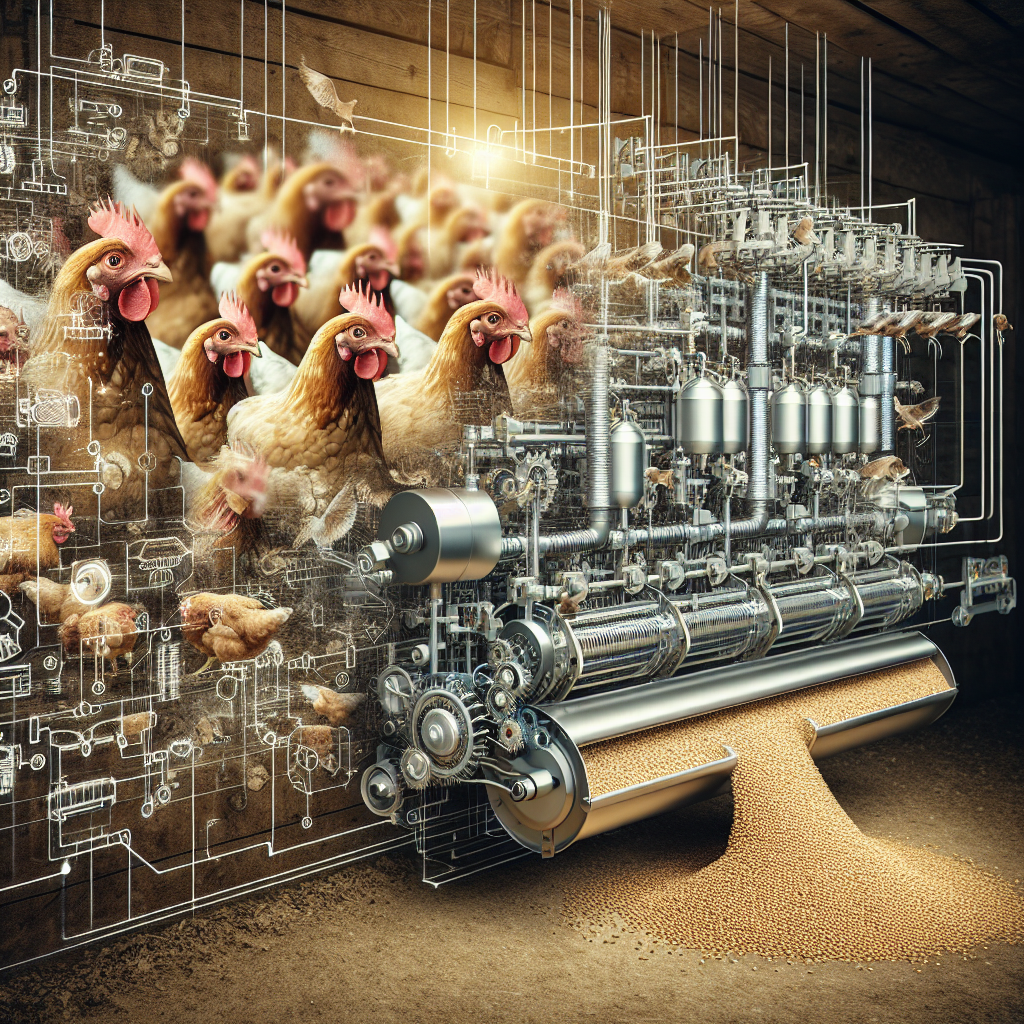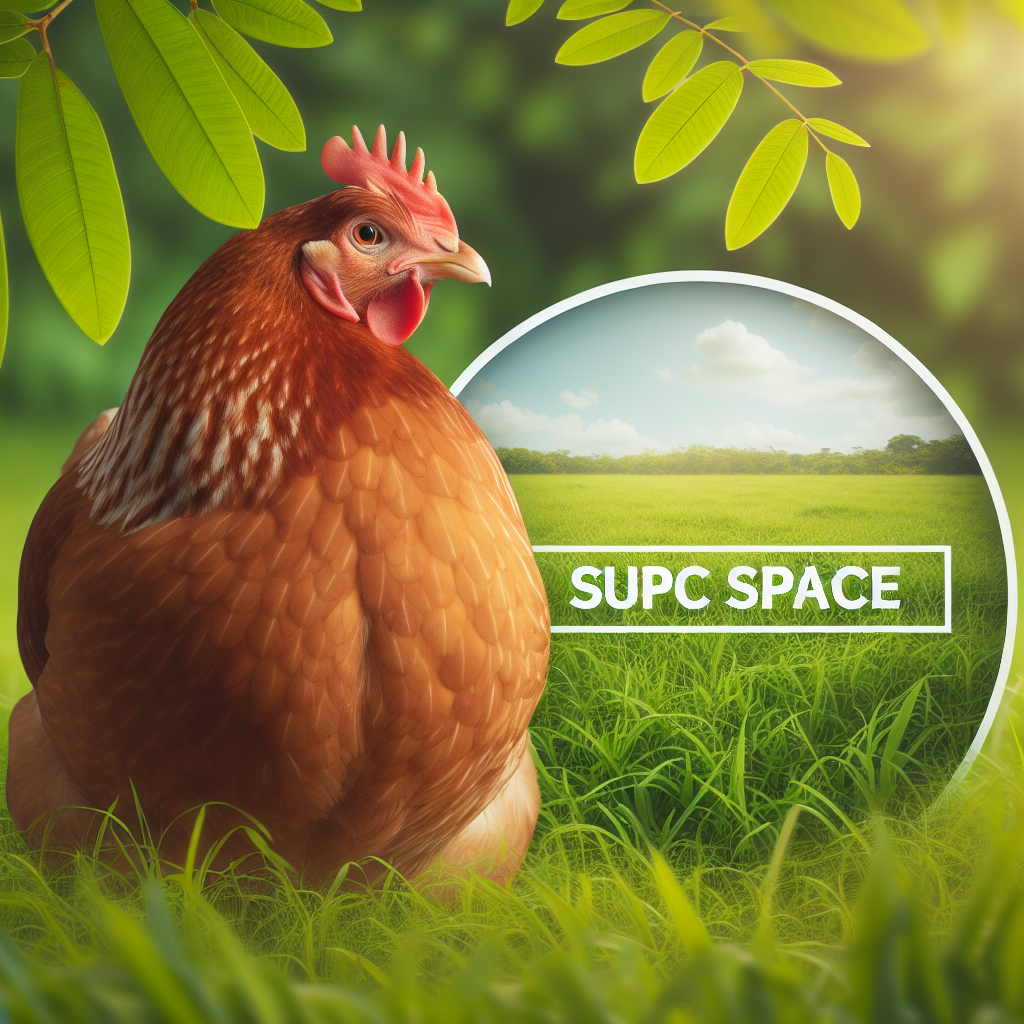Imagine a world where chickens roam freely, with ample space to peck, strut, and spread their wings. Sounds idyllic, doesn’t it? Well, technological advancements and coop design innovations are making this dream a reality. No longer confined to cramped cages, chickens are now able to live more comfortably and happily, thanks to creative solutions that optimize space for them. Whether it’s through the use of automated systems, sustainable materials, or ingenious layouts, these advancements are revolutionizing the way we think about raising chickens. In this article, we will explore how technology and coop design innovations are transforming the chicken farming industry, promoting animal welfare, and providing a healthier and more sustainable future for our feathered friends.
Understanding the challenges in optimizing space for chickens
Limited space availability
When it comes to chicken farming, one of the primary challenges faced by farmers is limited space availability. With the ever-increasing demand for poultry products, farmers often find themselves struggling to accommodate a large number of chickens within a limited area. This can lead to overcrowding, which has detrimental effects on the health and behavior of the chickens.
Importance of adequate space for chickens
Adequate space for chickens is crucial for their overall well-being and productivity. Chickens require enough room to move around freely, stretch their wings, and exhibit natural behaviors such as dust bathing and foraging. Insufficient space can lead to excessive stress, aggression, and the development of unhealthy habits. Moreover, cramped living conditions can also affect the chickens’ immune system, making them more susceptible to diseases.
Effects of overcrowding on chicken health and behavior
Overcrowding in chicken coops can have severe consequences for the health and behavior of the chickens. When there is not enough space for each bird, they may become stressed, leading to increased aggression and pecking behavior. Overcrowded chickens are also more susceptible to various diseases and infections due to the close proximity and lack of ventilation. In addition, limited space restricts their ability to exercise and move, resulting in reduced muscle development and overall fitness.
Technological solutions for optimizing space in chicken coops
Automated feeding systems
Automated feeding systems offer a solution to optimize space in chicken coops by efficiently managing the feeding process. These systems utilize sensors and timers to dispense the appropriate amount of feed at scheduled intervals. By automating the feeding process, farmers can reduce wastage and prevent food accumulation in the coop, thus creating more space for chickens to move around.
Automated egg collection systems
Another technological solution for optimizing space in chicken coops is the use of automated egg collection systems. These systems replace the traditional manual process of collecting eggs, which can be time-consuming and labor-intensive. By automating egg collection, farmers can save space that would otherwise be occupied by nesting boxes and removal trays. This allows for more efficient space utilization within the coop.
Smart lighting and temperature control systems
Smart lighting and temperature control systems are yet another technological advancement that can help optimize space in chicken coops. These systems use sensors and timers to regulate lighting and temperature conditions, creating an optimal environment for the chickens. By ensuring precise control of lighting and temperature, farmers can mitigate stress levels and enhance the overall well-being of the birds. Additionally, these systems can be programmed to simulate natural light cycles, promoting healthier growth and higher egg production.
Benefits and limitations of technological solutions
Improved feed efficiency and reduced wastage
Automated feeding systems offer significant benefits in terms of feed efficiency and wastage reduction. By accurately dispensing the right amount of feed at specific intervals, these systems ensure that chickens receive optimal nutrition without excessive waste. This not only maximizes space utilization but also results in cost savings for the farmer.
Enhanced egg collection and data tracking
Automated egg collection systems not only save space but also streamline the egg collection process. By automating this task, farmers can significantly reduce the time and labor required for egg collection. Moreover, these systems often come equipped with advanced data tracking capabilities, allowing farmers to monitor egg production rates and track performance trends, enabling data-based decision-making.
Initial setup and maintenance costs
While technological solutions do offer numerous benefits, it is important to consider the initial setup and maintenance costs. The implementation of automated feeding, egg collection, and smart lighting systems requires a significant investment. Additionally, these systems may require periodic maintenance and software updates, which add to the overall cost. Therefore, it is essential for farmers to carefully weigh the benefits against the costs to determine the feasibility of adopting these technological solutions.
Coop design innovations for space optimization
Multi-level and vertical coop designs
Multi-level and vertical coop designs are innovative solutions that offer increased space utilization while minimizing the footprint. By incorporating multiple levels or utilizing vertical space, farmers can effectively accommodate a larger number of chickens within a limited area. These designs often feature ramps, perches, and platforms that allow chickens to move freely between different levels, mimicking their natural behavior and providing ample space for exercise and roosting.
Modular coop systems
Modular coop systems are becoming increasingly popular in modern chicken farming. These systems allow for the customization and expansion of the coop based on the specific needs of the flock. By incorporating modular components such as detachable nesting boxes, removable walls, and expandable sections, farmers can optimize space utilization and easily adapt the coop to accommodate changing flock sizes.
Utilizing outdoor space efficiently
In addition to optimizing indoor coop space, farmers can also utilize outdoor areas efficiently to provide chickens with more room to roam. Outdoor runs and fenced enclosures enable chickens to access fresh air, natural sunlight, and open spaces, promoting their overall well-being. By carefully designing and managing outdoor spaces, farmers can significantly enhance space utilization and create a more conducive environment for their chickens.
Advantages and challenges of coop design innovations
Increased capacity and space utilization
Coop design innovations such as multi-level and modular systems offer advantages in terms of increased capacity and efficient space utilization. These designs enable farmers to house a larger number of chickens within a limited area, thereby maximizing production potential. With the ability to optimize vertical space and easily expand the coop, farmers can scale their operations without compromising the well-being of the birds.
Ease of cleaning and maintenance
Another advantage of coop design innovations is the ease of cleaning and maintenance. Modular coop systems often feature removable panels and detachable components, making it easier to access and clean different areas of the coop. Additionally, well-designed coop layouts with proper drainage systems enable efficient waste management, reducing the risk of disease transmission and ensuring a healthier living environment for the chickens.
Customizability and adaptability
Coop design innovations provide farmers with the flexibility to customize and adapt their coops according to their specific requirements. Modular coop systems can be easily modified, expanded, or reconfigured to meet the changing needs of the flock. This adaptability allows farmers to optimize space utilization and adjust the coop design to incorporate new technology or address any specific challenges they may encounter.
Effects of optimized space on chicken welfare and productivity
Reduced stress and improved health
Optimized space in chicken coops plays a vital role in reducing stress and promoting better health among the birds. Ample room for movement and exercise allows chickens to engage in natural behaviors, such as scratching the ground and stretching their wings. This reduces stress levels and minimizes the occurrence of aggressive behavior. Furthermore, optimized space along with proper ventilation improves air quality within the coop, reducing the risk of respiratory diseases and enhancing overall chicken health.
Enhanced natural behavior expression
Chickens thrive when they can express their natural behaviors freely. When provided with sufficient space, they can engage in activities such as dust bathing, foraging, and perching, which are not only essential for their physical well-being but also contribute to their mental enrichment. Optimized space allows chickens to exhibit their natural behaviors, resulting in happier and healthier birds.
Higher egg production and weight gain
Optimized space has a direct impact on the productivity of chickens. When chickens have enough room to move, exercise, and access resources, such as feed and water, they experience less stress and improved overall health. This, in turn, leads to higher egg production and weight gain. Additionally, chickens provided with optimized space are less prone to injuries and diseases, allowing them to reach their full genetic potential and maximize productivity.
Considerations for implementing technology or coop design innovations
Budget and cost analysis
Before implementing any technological solutions or coop design innovations, it is crucial to conduct a thorough budget and cost analysis. The initial setup costs, ongoing maintenance expenses, and potential return on investment should be carefully evaluated. It is important to ensure that the chosen solution is financially viable and aligns with the farmer’s budget and long-term goals.
Sustainability and environmental impact
Sustainability and the environmental impact of implementing technology or coop design innovations should also be taken into account. Opting for eco-friendly solutions and practices can reduce resource consumption, minimize waste generation, and promote a more sustainable approach to chicken farming. By considering the long-term environmental impact, farmers can contribute to the overall sustainability of their operations.
Compatibility with existing infrastructure
Farmers should consider the compatibility of technological solutions or coop design innovations with their existing infrastructure. It is essential to assess whether the chosen solution can seamlessly integrate with the current setup and infrastructure. Compatibility issues could lead to inefficiencies or, in some cases, may require additional modifications or investments to ensure smooth implementation.
Successful case studies of space optimization for chickens
Farm X: Implementing automated feeding and lighting systems
Farm X successfully optimized space for their chickens by implementing automated feeding and smart lighting systems. The automated feeding system ensured optimal utilization of feed without wastage, while the smart lighting system provided chickens with consistent lighting conditions, mimicking natural daylight cycles. These technological solutions not only maximized space but also enhanced the overall health and productivity of the chickens.
Farm Y: Utilizing vertical coop design for improved space usage
Farm Y overcame space limitations by adopting a vertical coop design. By incorporating multiple levels and utilizing the height of the coop, they were able to provide ample space for their chickens without expanding the footprint. The vertical coop design allowed chickens to utilize vertical space for roosting, perching, and exercise, resulting in improved well-being and increased capacity within a limited area.
Farm Z: Modular coop system implementation for increased capacity
Farm Z optimized space by implementing a modular coop system. This allowed them to easily customize and expand their coop as their flock size increased. The detachable nesting boxes, removable walls, and expandable sections provided flexibility and adaptability, ensuring efficient space utilization and increased capacity. This, in turn, enabled them to meet the growing demand for their poultry products.
Future trends and possibilities in space optimization for chickens
Integration of artificial intelligence for real-time monitoring
Looking ahead, the integration of artificial intelligence (AI) holds great potential for space optimization in chicken farming. AI-powered systems can monitor and analyze real-time data on factors such as temperature, humidity, feeding patterns, and behavior. By automatically adjusting environmental parameters and optimizing resource allocation, AI can further enhance space utilization and improve the overall welfare and productivity of chickens.
Advancements in eco-friendly and sustainable coop designs
Future trends in space optimization for chickens will likely focus on eco-friendly and sustainable coop designs. Innovations in materials and construction techniques can contribute to energy efficiency, waste reduction, and environmental conservation. Coop designs that prioritize natural ventilation, rainwater collection, and renewable energy sources will help poultry farmers create a more sustainable and environmentally friendly farming ecosystem.
Remote control and management systems for chicken farming
The rise of remote control and management systems presents exciting possibilities for space optimization in chicken farming. Remote monitoring and control platforms allow farmers to manage and monitor their coops from anywhere, ensuring continuous checks on environmental conditions and animal welfare. These systems enable timely interventions, enabling farmers to respond promptly to any issues that may arise, ultimately optimizing space and promoting efficient poultry production.
Conclusion
Optimizing space for chickens is a crucial step towards ensuring their welfare, productivity, and overall well-being. The combination of technological solutions, such as automated feeding and egg collection systems, with innovative coop designs, such as vertical layouts and modular systems, presents promising possibilities for effective space utilization. By carefully considering the benefits and limitations of these solutions, farmers can find the most suitable approach to optimize space in their chicken coops. Ultimately, the successful implementation of space optimization strategies will positively impact chicken welfare, enhance productivity, and contribute to the sustainability of the poultry industry.




